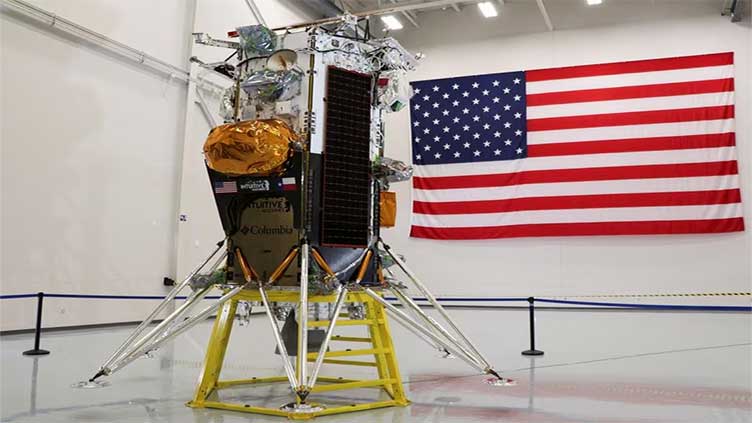CAPE CANAVERAL, Florida: A lunar lander built by Houston-based aerospace company Intuitive Machines launched from Florida on Thursday on a mission to make America’s first moon landing in more than half a century and the first private spacecraft.
The company’s Nova-C lander, dubbed Odysseus, lifted off shortly after 1 a.m. EST (0600 GMT) atop a Falcon 9 rocket piloted by Elon Musk’s SpaceX from NASA’s Kennedy Space Center at Cape Canaveral.
NASA-SpaceX’s live online video feed showed the two-stage, 25-story rocket roaring off the launch pad and heading into the dark sky over Florida’s Atlantic coast, trailing a fiery yellowish plume of exhaust.
The launch, previously set for Wednesday morning, was delayed 24 hours due to erratic temperatures detected in the liquid methane used in the lander’s propulsion system. SpaceX said the issue was later resolved.
Although the IM-1 flight is considered an Intuitive Machines mission, it is carrying six payloads of NASA instruments designed to collect data on the lunar environment ahead of the planned return of NASA astronauts to the Moon later this decade.
Thursday’s launch came a month after Astrobotic Technology’s lunar lander, another private firm, suffered a leak in its propulsion system en route to the moon shortly after it was placed into orbit on Jan. 8 by a United Launch Alliance (ULA) Vulcan rocket debut flight.
The failure of Astrobotic’s Peregrine lander, which also flew NASA cargo to the moon, marked the third time a private company has been unable to achieve a “soft landing” on the lunar surface, following ill-fated efforts by companies from Israel and Japan. .
These accidents illustrated the risks NASA faces in relying more than in the past on the commercial sector to realize its spaceflight goals.
Plans call for Intuitive Machines’ Nova-C, a hexagonal cylinder with four legs, to reach its destination after about a week’s flight on Feb. 22, landing in the Malapert A crater near the moon’s south pole.
If successful, the flight would mark the first manned landing on the lunar surface by an American spacecraft since the last manned mission to the moon in 1972, and the first by a private company.
The feat would also mark the first trip to the lunar surface under NASA’s Artemis lunar program, as the US races to return astronauts to Earth’s natural satellite before China lands its own crew there.
IM-1 is the latest test of NASA’s strategy to pay for the use of spacecraft built and owned by private companies to reduce the cost of the Artemis missions, which are considered the forerunners of human exploration of Mars.
In contrast, during the Apollo era, NASA purchased rockets and other technology from the private sector, but owned and operated them itself.
NASA announced last month that it was pushing back its target date for the first manned Artemis moon landing from 2025 to late 2026, while China said it was targeting the 2030s.
Small landers like Nova-C are expected to get there first, with instruments to explore the lunar landscape in detail, its resources and potential hazards. Odysseus will focus on space weather interactions with the lunar surface, radio astronomy, precision landing technology, and navigation.
Intuitive Machine’s IM-2 mission is scheduled to land at the moon’s south pole in 2024, followed later this year by the IM-3 mission with several small rovers.
Last month, Japan became the fifth country to place a lander on the moon, with its space agency JAXA achieving an unusually precise “precision” landing of its SLIM probe last month. Last year, India became the fourth country to land on the moon after Russia’s failed attempt in the same month.
The United States, the former Soviet Union, and China are the only other countries to have made successful soft landings on the Moon. China achieved a world first in 2019 when it achieved the first landing on the far side of the moon.





